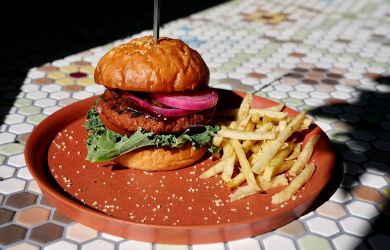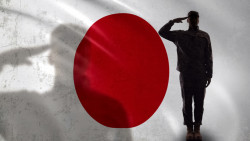
April 1, 2010
The Food Files
Metropolis rounds up the latest in culinary-themed reading
By Metropolis
Originally published on metropolis.co.jp on April 2010
Japanese Cocktails
By Yuri Kato
(Chronicle Books, 2010, 95pp, ¥1,396)
Japanese Cocktails is filled to the brim with original concoctions with fun names like Oyaji, Salty Hachiko Dog, Bloody Mari-chan and Office Lady. And not only are the names creative, so are the recipes. With drinks based on sake, shochu, whisky and more, this thin book has a cocktail to please everyone, many of the recipes are easy even for the inexperienced mixologist. The Hinomaru is umeboshi in warm sake, while the Samurai Courage combines yuzu juice with hot daiginjo. Japanese Cocktails was written with the support of Suntory, so it includes some recipes based on the beverage giant’s lineup of whisky, Midori melon liqueur, and Kuromaru sweet-potato shochu. But in no way does this detract from the appeal. Author Yuri Kato, a “beverage alcohol consultant,” consistently offers offbeat and appealing drinks. Mixers include chestnut puree, aloe vera juice, steamed milk and even ice cream, while traditional Japanese ingredients range from citrus juices like kabosu and yuzu to matcha powder and hojicha tea. Kato’s expertise shines in her explanations of shochu and Japanese whisky, in particular on how to properly prepare a mizuwari (diluting with water). If you enjoy mixing your own drinks, or even if you just want to get started, this fun book will be an excellent guide.
A Cook’s Journey to Japan
By Sarah Marx Feldner
(Tuttle Publishing, 2010, 160pp, ¥3,130)
Sarah Marx Feldner takes readers on a trip through Japan with homestyle recipes from around the country. Her cookbook opens up with an informative guide to Japanese kitchen utensils, ingredients and basic cooking techniques. Filled with step-by-step photos to help novices master essential skills, A Cook’s Journey to Japan will give readers the courage to try new recipes. Classic dishes include tori karaage (Japanese-style fried chicken), age-dashi dofu (deep-fried tofu), and tonjiru (pork miso soup). But it’s the nontraditional recipes that really catch the eye, like Japanese “cocktail peanuts” (nuts baked in a sweet miso coating), ginger-fried soybeans and daikon salad with a spicy karashi-mentaiko dressing. There is even a dessert chapter that will have you craving matcha ice cream with brown-sugar syrup or Kagoshima shiro-kuma (shaved ice with condensed milk and fruit). The food styling is extremely appealing, with most recipes having their own separate photo. A Cook’s Journey to Japan gathers some of the country’s best recipes, and will be a treat for anyone looking to expand their repertoire of Japanese cuisine.
Sushi
By Ole G. Mouritsen
(Springer, 2009, 330pp, ¥3,357)
A professor of biophysics at the University of Southern Denmark, Ole G. Mouritsen has penned the most extensive and authoritative book—dare I say encyclopedia?—on sushi to date. This weighty tome is packed with more information than most readers will ever need. Yet that’s exactly where it shines. The author’s curiosity and passion about fish is evident throughout. Perhaps most notable is that, unlike other sushi books written by non-Japanese, the information about seafood is factually correct. Sushi will educate readers on all aspects of fish—texture, taste and how they are served. Packed with photos and illustrations (by the author’s son), this comprehensive guide also includes information on other dishes at the sushi counter, from the rice and vinegar used to make the shari to the green tea that ends the meal. With an extensive glossary and a rich bibliography, Sushi will find its way onto the bookshelves of chefs and foodies the world over. After consuming this work, readers themselves should be given a PhD in sushi.
The Niigata Sake Book
By The Niigata Sake Brewers Association
(The Japan Times, 2009, 86pp, ¥2,100)
There’s relatively little information on sake printed in English, so whenever a new work on nihonshu comes out, it’s worth carefully perusing. The Niigata Sake Book does not disappoint, especially for readers wanting to know more about the technical side of sake. It’s based on a work called The Niigata Sake Expert Textbook and, according to translator Mike Masuyama, is “the first sake book written in Japanese to be translated into English.” With its cool temperatures, rich water sources and highly esteemed rice, Niigata is an ideal location for making top-quality sake. This book is geared towards those looking for more scientific and technical information, including details about the brewing process, how to read labels, and what the differences are between rice strains. It’s suitable even for the beginner, though, with an opening section that’s filled with color photos and simple tasting notes. Masuyama deftly guides readers through the nuances of sake, offering insightful tips on flavor profiles that will empower anyone to become knowledgeable. This book is destined to become a reference guide—not only for Niigata sake, but for sake in general.











